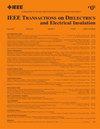Enhancing Partial Discharge Classification Through Augmented Fault Data Balancing
IF 3.1
3区 工程技术
Q2 ENGINEERING, ELECTRICAL & ELECTRONIC
IEEE Transactions on Dielectrics and Electrical Insulation
Pub Date : 2025-07-03
DOI:10.1109/TDEI.2025.3585844
引用次数: 0
Abstract
Partial discharge (PD) is a prevalent phenomenon in high-voltage (HV) equipment, and its accurate classification is crucial for ensuring the reliability of power systems. For in situ systems, different types of faults, such as corona, floating electrode, surface, and void discharge, exhibit varying occurrences, posing challenges to accurate classification. This research addresses the inherent issues of classification accuracy caused by unbalanced fault data. Employing z-score normalization and combined synthetic data generation using a random undersampling and synthetic minority oversampling technique (SMOTE) ensures a fair representation of different fault types, leading to more accurate classification results. Further, after applying grid-search to optimize the hyperparameters, k-nearest neighbor (KNN), random forest (RF), and gradient boosting (GB) have achieved accuracies of 98.43%, 95.29%, and 88.54% for balanced denoised, unbalanced denoised, and unbalanced noisy datasets, respectively. The presented results also demonstrate a significant statistical difference in classifier accuracies between the three datasets, as confirmed by the analysis of variance (ANOVA) test. This emphasizes the efficacy of balancing the denoised signal features for improved classification performance. The findings of this work contribute valuable insights into the optimization of PD classification models, paving the way for more reliable fault detection and classification in HV equipment.通过增强故障数据平衡增强局部放电分类
局部放电是高压设备中普遍存在的现象,其准确分类对保证电力系统的可靠性至关重要。对于原位系统,不同类型的故障,如电晕、浮电极、表面和空穴放电,表现出不同的发生率,给准确分类带来了挑战。该研究解决了故障数据不平衡导致的分类精度问题。采用z-score归一化和随机欠采样和合成少数过采样技术(SMOTE)相结合的合成数据生成确保了不同故障类型的公平表示,从而获得更准确的分类结果。此外,在应用网格搜索优化超参数后,k最近邻(KNN)、随机森林(RF)和梯度增强(GB)在平衡去噪、不平衡去噪和不平衡噪声数据集上的准确率分别达到了98.43%、95.29%和88.54%。通过方差分析(ANOVA)检验,本文的结果也证明了三个数据集之间分类器准确率的显著统计差异。这强调了平衡去噪信号特征以提高分类性能的有效性。本工作的发现为PD分类模型的优化提供了有价值的见解,为更可靠的高压设备故障检测和分类铺平了道路。
本文章由计算机程序翻译,如有差异,请以英文原文为准。
求助全文
约1分钟内获得全文
求助全文
来源期刊
CiteScore
6.00
自引率
22.60%
发文量
309
审稿时长
5.2 months
期刊介绍:
Topics that are concerned with dielectric phenomena and measurements, with development and characterization of gaseous, vacuum, liquid and solid electrical insulating materials and systems; and with utilization of these materials in circuits and systems under condition of use.

 求助内容:
求助内容: 应助结果提醒方式:
应助结果提醒方式:


